|
There has been a lot of noise in the cycling media about training at 'Zone 2'. Inspired by a question from one of my riders (thank you Rich) I thought I'd have a dig around to find out what all the fuss was about. This is what I discovered. Take away messages
Introduction It makes sense to trust the training methods we know work, so novel approaches or new framings of existing training protocols should be welcomed but examined with a critical eye. Accordingly we should be rightly cautious about claims of efficacy of the latest training fad or the promise of quick fixes if they’re being sold without good evidence. Recently there has been a repackaging of ‘Zone 2’ training as all that is needed for race winning fitness. With training advice awash with ‘bro science’ this is, as you might expect, bollocks. Tadej Pogačar’s coach, Iñigo San Millán’s message about the importance of Zone 2 training has been widely misinterpreted and misapplied. Whilst it is tempting to believe race winning performance emerges from a few hours of relatively easy riding measured by conversational breathing, it does not. However, Zone 2 is a vital component of a training mix to develop fitness but the nuance of the message has been lost. This piece will therefore address
Why the big fuss about Zone 2? Most of those involved in endurance training understand the value of longer endurance rides at relatively moderate intensities. Amassing base miles as part of periodised training over the colder months as preparation for cycling or racing in the warmer ones is not new so why the fuss now?
Defining Zone 2 – Intensity How Zone 2 is defined depends on what is used to measure it. The ‘San Millán’ definition of Zone 2 When interviewed San Millán defines Zone 2 intensity with reference to breathing, training whilst being able to hold a conversation or breathing through the nose. This is a very broad ‘measurement’ open to interpretation depending, amongst other things, on the nature of the conversation and the size of the nose. However, San Millán agreed with a question put to him by Dr Peter Attia that 70-80% Max heart rate is probably about right. Zone 2 power Andy Coggan (in Training and Racing with a Power Meter) who developed power zones based on a measure of Functional Threshold Power, defines Zone 2 as 56 – 75% of FTP. Joe Friel (in The Power Meter Handbook) says the same. Interestingly, Training Peaks rounds this up to 60-80% of FTP which, at the top end makes quite a difference, and Zwift in their Blue Zone 2, call it 60-75% of FTP. Level 2 heart rate Peter Keen who worked with British Cycling and Chris Boardman in the 1990s who pioneered heart rate and power measurement for cyclists defines Level 2 heart rate as 70-80% of max HR. This aligns with Dr Stephen Seiler’s Green Zone training which suggests an intensity not exceeding 80% of max heart rate. Lactate threshold There are 28 different definitions of lactate threshold and it’s not something that can be routinely monitored outside of the lab although, as you can imagine, a ‘wearable’ is being developed. For our purposes, the body will clear the lactate it generates at an intensity below 80% of max HR. Fundamentally, this is steady state riding and, for our purposes Zone 2. In summary, in my mind at least, San Millán’s breathing/metabolic measured approach translates better to heart rate (an effort metric) than power (an output metric) and his Zone 2 does seem to equate broadly to 70-80% of max HR. The distinction between power and heart rate measurement is important because they do not equate. Zone 2 power is less intense than Level 2 heart rate. The distinction between power and heart rate measurement is important because they do not equate. Zone 2 power is less intense than Level 2 heart rate. Defining Zone 2 – Duration Using power as a metric, it’s unlikely you’ll find cycling coaching advice that recommends more than 6 hours at the bottom end of the zone 2 in one single session or more than 4 hours at the top. The possible exception being Ironman distance related. Boardman reckoned he would spend no more than 2 hours at an intensity of 70-80% of max HR at any point. However, all training is on a curve and the lower the intensity, the greater the potential duration and vice versa. San Millan talks about rides of 90mins or so in duration being effective which indicates to me Zone 2 based on power measurement is likely to be too easy to match his definition. For practical purposes, rides of less than an hour are likely to be too short, more than 4 hours and it’ll drift into Zone 1. It seems to me durations of 60 mins to 2 hours in Zone 2 measured by heart rate, breathing (should you wish to try that approach) or power at 70-85% of FTP is an effective time frame. Defining Zone 2 – Frequency San Millán talks about riding at his Zone 2 for between 2 to 4 days a week. 2 days a week in the cycling season (on the assumption racing or events are happening) and 4 days a week during the training phases of the year. This is a repackage of the 80/20 rule. A 5 hour training week would break down to 4 hours Zone 2 and 1 hour at higher intensities. The intense hour may itself break down to 80% Zone 2 (warm up, cool down and rest periods) with 20% at Zone 5 during interval training. This makes sense but is nothing new. The 80/20 principal is tried, tested and effective. Most balanced training programs allowing time for recovery and ‘real life’ will broadly fit into this healthy mix. What Zone 2 training does, and doesn’t do At its core it’s bike riding and is essential for all those adaptions, muscular, metabolic, cardiovascular, technical, tactical and psychological on which high performance is based. It’s base miles and you can’t build high performance race winning intensity without it. However, there are some misleading claims about what it else Zone 2 does.
How Zone 2 training is implemented and measured When asked ‘how much should I do?’ San Millan is cautious, with good reason, about being too specific on intensity, duration and frequency. Of course, each athlete is different so maybe it’s an impossible question, but it also maintains an air of mystery. Bringing together what I’ve heard him say about intensity, duration and frequency, it boils down to 2 to 4 days per week at 90 mins per session with conversational breathing as a measure of intensity. In fairness to him, I think this is about as close as you can get to saying something helpful and it's more informative than 'it depends on the individual'. However, it raises as many questions as it answers about how precisely it should be applied. Conclusion For what it’s worth, I think San Millán’s Zone 2 definition equates broadly to 70 - 80% max HR. This is a really effective training zone and, however measured, we definitely need a proportion of it and 80/20 is not a bad starting point for mapping frequency and duration. Precisely how much, when and how often is going to depend on the goals and physiology of the individual rider. Whilst it might sound like pedantry, the subtle differences are important to get the benefits of training at Zone 2. Undercut it and it’s ‘junk miles’, overdo it and it risks over training and fatigue. Heart rate and power zones don’t match well but, using power as the measure, I think it equates better to 70-85% rather than the standard parameters of 56 to 75% of FTP. This is over the mid-point of Zone 2 power potentially merging into sweetspot (88% FTP) for a duration for 60mins. For rides up to 2 hours in duration 70% of FTP feels about right. Heart rate and power measurement used in tandem provide powerful metrics so try it and see? Do a 20 minute warm up and an hour at 70-80% max heart rate and see what Normalised Power is produced. Also, see how it feels and be conscious of your breathing - it's not easy riding. If you’ve fought your way through all this (well done and thanks) and have come to a big ‘so what?’ that’s pretty much where I got to too. To get fitter, doing a proportion of training at Zone 2 is great advice but it’s nothing new. That it needs to be programmed carefully and sustainably in combination with more intense work should come as no surprise either. Good old Zone 2 has just had a glow up, it’s been framed with a little mystery and accelerated with a sprinkling of celebrity stardust. The risk is that it is misinterpreted as it’s all that’s needed to generate high performance. I don’t think Tadej Pogačar is getting race fit with 6 hours a week riding whilst chatting and his coach does not make this claim. However, the power of his message and its attachment to Pogačar has become amplified by celebrity and distorted by influencers. Rich Smith is a psychology graduate and a British Cycling qualified Level 3 Road and TT coach supporting riders nationally and internationally. He is coach to the Great Britain Transplant Cycling team and launched RideFast Coaching in 2015 to provide physiologically effective and psychologically sustainable training to riders at all levels.
1 Comment
A casual flick through social or main stream media will leave the reader in no doubt the prevalence of mental illness is on the rise in the UK. It’s hard to avoid news and commentary programs on television that don’t frame stress and anxiety as part of the ‘permacrisis’ that seems to be integral part of everyday life. Indeed, a survey carried out by the NHS in 2014 revealed 1 in 6 people in the UK are experiencing a common mental health disorder, most commonly anxiety or depression. Now, NHS figures show this has risen to 1 in 4. The figures are alarming. Ironically stressful and depressing in fact, but they do require a certain amount of unpacking before they can be unquestioningly added to fuel the bonfire of worry engulfing the UK. In particular, questions about how anxiety is defined, about how it is experienced and about how it is treated both by health care professionals and addressed at a policy level by government should be addressed. The Oxford Dictionary of Psychology defines anxiety as a feeling of dysphoria (unease and dissatisfaction) together with symptoms of tension such as elevated heart rate, a tightening in the stomach and a dry mouth. This is a useful start, but it does little to explain the emotional impact and crippling dysfunction this can have on individuals and how it can make everyday life an insurmountable challenge for some. How anxiety is experienced in the real world, and why it is a problem unique to humans is helpfully illuminated by Mark Williams, a Professor of Clinical Psychology at Oxford University. He asked an audience to imagine a scene from a wildlife documentary where a lion was circling a herd of gloriously oblivious impala. Gazing calmly, seemingly without a care in the world, when the impala become aware of the lion’s presence, they stop grazing and look up to locate the danger. As the lion charges, their natural ‘fight or flight’ instinct kicks in. Eyes widen, heart rate increases, muscles tense and the impala run flat out to escape unenviable prospect of being lion lunch. However, whether the lion is successful or not, it is only a matter of minutes before the impala resume their calm grazing. Seemingly oblivious to the recent attack and unconcerned about its inevitable reoccurrence. Thankfully, most humans don’t have to deal with lion attacks but they do have to deal with attacks of different kinds all the time and, unlike the impala, have evolved a mind that is capable of remembering past traumas, projecting future ones and conjuring up the prospect of imagined ones, however fanciful, and adding them all to a complex social world. It seems humans don’t have the luxury of returning untroubled to peaceful grazing. This raises the question of whether anxiety, however unwelcome, is a natural and necessary state, an essential survival mechanism and something that should be accepted and managed as part of being human. For those dealing with intrusive anxiety, a visit to the GP is often the first, and entirely sensible, point of call. Perhaps unsurprisingly, a doctor is likely to frame this as a pathological problem – an illness that needs to be treated and will respond by either.
However, there is a growing recognition that humans are social animals and, unlike impala, live in a very complex social world. A study in evolutionary psychology indicated, when compared to other primates, a disproportionately large part of the brain has evolved to deal with negotiating our social structure, thinking about others, what others might think, what others might think about us and even what others might think about others. It’s perhaps unsurprising that, although our minds are adept at dealing with the social affairs of those we are intimate with, when faced with multiple social triggers, often delivered with urgency implicated in the bleeps and flashing lights by a treasured hand held device, we struggle to cope. We live in a world where it seems everything is after our immediate attention. There is a body of evidence suggesting that poor mental health generally, and anxiety specifically, is influenced less by biology or cognition and far more by our social circumstances. Particularly relevant in a post Covid, cost of living crisis dominated world, studies have shown inequality, characterised by a growing gap between the ‘haves’ and the ‘have nots’, together with increasing individualism and materialism have significant negative impact on a sense of well-being and a healthy mental state. The medicalisation of anxiety (and depression) also sidesteps a growing body of evidence showing that training and physical exercise is effective in relieving the intrusive symptoms of both. Simply, a daily 30 min walk outside can help but weight training and cardiovascular training is even better. However, drug companies don't make money by telling people to go for a walk. Arguably, against a background of the breakdown of the family and the erosion of trust in institutions, it is reasonable to question whether anxiety really is a problem that can be solved by medics, drugs and therapy or whether changes in public policy would be more effective. Whilst medical professionals should be the first port of call for those struggling with serious mental health problems, including anxiety at a debilitating level, it is inexcusable to ignore the evidence of a strong societal influence and the positive benefits of reconnecting with our environment through exercise. Rather than drugs and therapy, perhaps a more equal and accepting social landscape coupled with a daily walk would be more likely to support our return to peaceful grazing. Rich Smith is a psychology graduate and a British Cycling qualified Level 3 Road and TT coach supporting riders nationally and internationally. He is coach to the Great Britain Transplant Cycling team. He launched RideFast Coaching in 2015 to tell people how to ride a bike. Flush with meagre academic success, it seems he's now expanding his remit to tell people how to live their lives. I know right, disappointing. Here we are doing all this riding and training, bashing out the endurance miles but our weight remains stubbornly the same. Shocking isn’t it? Feels like a betrayal for those of us who ride whilst watching what we eat but remain bewildered and frustrated that we carry more fat than we want despite mammoth efforts. Why might this be? Being charitable, it appears we’ve been misled about the contribution exercise has for weight loss. A cynic may say we’ve been lied too about how exercise and weight loss works by clever people in the food industry who are after our money. Some myths are busted below. We don’t burn as many calories as we think A power meter will give a very accurate measurement of how many kcals a rider burns during training. A heart rate monitor will provide a decent estimate too. Logically we should be able knock this off daily calorie count, have a couple of biscuits and still be well under. Not so fast. A thing called the Energy Compensation Effect means because, knowingly or not, we take more rest after exercise so that consumption figure is reduced to 72% on average (Careau et al, 2021). We’ve adapted to our energy expenditure A seminal study on a hunter gather tribe, the Hadza in Tanzania, showed despite their very active lifestyle, they range over huge areas to collect food fundamentally taking a huge amount of exercise, their actual energy expenditure was no greater than people in developed Western societies. They adapted to the activity and have become efficient at a metabolic level. What makes them slim and have low body fat is the amount of food they eat, not how much they expend (Pontzer, H et al, 2012). As cyclists, we have also adapted to our way of life and have rebalanced our energy expenditure. We take energy from other biological systems Train frequently and, yes, the energy will come from readily available stores – glycogen from the muscles and liver and an element of fat. However, it will also take energy away from the immune system, the brain (the biggest burner of energy at about 20% of all the energy we ingest), the reproductive system, the menstrual system in women and the digestive system. If you’ve ever tried riding hard after eating something significant, or tried to eat too quickly after a hard training session, you’ll probably be familiar with the uncomfortable consequences. The blood that should be in the gut digesting food has been diverted to the muscles. The rise of Relative Energy Deficiency in Sport (RED-S) can affect both sexes but is particularly pernicious in women athletes who risk the effects of amenorrhea and a reduction in bone strength. A good reason for making sure we're properly fuelled when training. We probably eat more than we admit Consciously or sub-consciously, we eat more than we should because we’re being healthy and righteous and therefore deserve a treat. Alternatively, we’ve done a lot of riding and we crave more calories because our biology tells us to return to homeostasis – to refill our valuable energy stores for future emergencies. It's easy to drink a lot of calories without really noticing too. We eat the wrong things at the wrong time Fast sugars like gels, bars, even bananas rapidly increase blood sugar levels and trigger an insulin response. Insulin removes unused glucose from the blood and stores it as fat. It does a cracking job at this which is why we have an obesity epidemic, a huge rise in type 2 diabetes and far more cases of non-alcoholic fatty liver disease. To make matters worse, we put the body under stress when we exercise which triggers the release of cortisol. This is useful because we interpret that positively as excitement when exercising but the body doesn’t get the mental model and it will use cortisol to store fat if it can. Eating sugar rich food in the evenings or first thing in the morning – the worse culprits seem to be breakfast cereals and fruit juices - and there a good chance it will be stored. Bottom line is aerobic exercise like cycling requires carefully planned fuelling to ensure we get enough of the right stuff at the right time to help the system work optimally but no more than that. ...the effective variable is food, not exercise... But, calories in equals calories out, right? Yes and no. This is the partial truth the food, fitness and health industries rely on. ‘CICO’ still holds broadly true insomuch as if you take in more energy than you expend it will be stored as fat, eat less and weight will be reduced. However, the effective variable is food, not exercise. Research suggests how we take the calories in is increasingly important. Nutrient dense whole foods – foods that don’t have ingredients labels like chicken, fish, fruit, vegetables, salad and nuts are more filling so we tend to eat less of them. They are the original healthy alternative to Ultra Processed Food as nutrients enter the body more slowly in the transport system matched to our digestive system, not stripped to their raw components and effectively injected in the form of sugar rich liquids. By way of example, measured by a boffin with a calorie bomb, 100kcals worth of pure white sugar has an actual absorption rate of about 95%, meaning the ingestion of 95kcals. Measured in the same way, 100kcals of almonds has a bioavailability of about 80kcals because some of the fats go undigested. Each food has it’s own bioavailability level when it makes contact with the human digestive system. So, we’re screwed then? If we’re aiming to lose weight by training it off, yes, we’re wasting our time although it does help maintain any weight loss already achieved. However, there are so many other benefits to cycling, and exercise generally, that it’s a no brainer to either continue or to start. Activity is a vital part of human health – mental and physical. You almost certainly live a longer, happier life by taking regular exercise, just don’t rely on it as a weight loss mechanism. Rich Smith is a psychology graduate and a British Cycling qualified Level 3 Road and TT coach supporting riders nationally and internationally. He is coach to the Great Britain Transplant Cycling team. He launched RideFast Coaching in 2015 to lecture people on how they should live their lives. This has so far proved unsuccessful.
I’ve be accused of being a nutritional Luddite on a few occasions. I guess this stems back to being told firmly during my coaching qualifications that I was not a nutritionist and that, when asked for a sports nutrition recommendations, I should refer to a ‘healthy balanced diet’ and make a swift exit. I haven’t moved from this position and the more I find out about the food industry generally and the sports nutrition industry specifically, the less likely I am ever to do so. Academically I’m an evolutionary psychologist, interested in how & why humans have come to be what they are over the last couple of millions years so Luddite is an underestimate. Neolith more like. All this might seem a stretch for a piece about performance nutrition for cyclists but bear with me, at least I’m not starting with ‘first, the earth cooled’. We’ve been cooking food and combining ingredients to make tasty things for a long time. Research shows fire was first used to process food about 1.4 million years ago and has been in daily use for 300,000 years. Cooking allowed us to expand the things we could safely eat, helping us reproduce and spread across the globe. We evolved mainly eating the nuts, berries, meat and eggs that were naturally available to either hunt or gather. About 12,000 years ago humans began to domesticate wild crops to produce wheat and oats and animals (pigs and cattle) so we didn’t have to hunt or gather it just look after it, cook it and eat it. Evolutionarily it worked. There are now 8 billion of us. ’If you’re firmly of the opinion ‘God did all this’ 3000 years ago, you should probably stop reading now... All babies are born with the ability to digest their mother’s milk but this fades as they grow out of childhood. Adults developed the ability to process lactose (lactase persistence) about 5000 years ago because it was evolutionarily advantageous and genetically selected for. This means we are now able to drink milk and digest dairy foods without shitting ourselves to death or being sick. Milk is a readily available food source rich in protein, fat and minerals meaning a human with the ability to tolerate it had a better chance of surviving and reproducing than one that didn't. It is also sustainable provided we don’t eat the cow and turn its skin into shoes. The reason for troubling you with this prehistoric lesson is to emphasise the human digestive system has evolved over millennia. If the fundamentals change, they change slowly. We need to reframe ‘performance nutrition’ because if we want to thrive as athletes we first need to be healthy humans and sadly, many of us are not. This means eating more whole, unprocessed foods without additives, particularly sugar and calorie free sweeteners. Whilst we desperately need to pay more heed to a digestive system attuned to dragging big stones around and have a knees up in mid summer, Ultra processed food (UPF) now makes up the majority of our diet. On average 73% of the food sold in supermarkets is UPF. In the UK 1 in 4 adults are obese and a further 1 in 3 are overweight because of this. So, what’s to be done to ensure our diet supports rather than hinders performance? Reduce consumption of Ultra Processed Foods - The food industry, of which sport nutrition is a microcosm, morphed from the mid-1970s from supplying food to producing consumables that look like food. We are now faced with clever, well financed corporate entities trying to persuade us to stuff our finely tuned system with chemicals that shouldn’t be there in quantities we don’t need. A study by an agency of the The World Health Organisation says Ultra Processed Food (UPF) is responsible for increases in cancer, heart disease and diabetes as well as encouraging over eating. Bread has historically been made from wheat, flour water and yeast. However, the ingredients list for a Sainsbury’s wholemeal loaf is wholemeal wheat flour, water, wheat gluten, yeast, rapeseed oil, salt, spirit vinegar, soya flour, calcium propionate, caramelised sugar, mono and diacetyl tartaric acid esters of mono and diglycerides of fatty acids, palm oil and ascorbic acid. Many of the staples of our diet have changed, but nobody has told us. UPFs now make up about 60% of the adult diet. 70% for adolescents. It is the foundation of the current obesity epidemic as it is easily absorbed, calorie dense, nutrient deficient and addictive Eat whole foods - As sad as it seems, it is necessary to critically look at those things claiming to be food to see what emulsifiers, flavour enhancers, preservatives and sweeteners have been added to them to understand the effects they have. For example, sugar substitutes like aspartame prime the gut and hormonal response on taste to expect sugar or a nutrient that contains it. When the 2 million year old reward centre of the brain doesn’t get the calorific and nutritional content it has been conditioned to expect, cravings develop and temptation is to hit the biscuit barrel. Perhaps even worse, deprive the amygdala of the sweet treat is has been promised and it will become stressed and release cortisol with the doubly whammy of anxiety AND a greater propensity to store fat. We’re better off just eating the sugar. A link to Dr Robert Lustig’s excellent summary of the effect of sugar and UPFs is here if you would like more detail. We are physiologically and psychologically ancient. To optimise performance, maximise the consumption of whole foods, minimise those that contain lots of ingredients and additives and look critically at 'health' claims. Don’t fall for sports nutrition marketing - Humans can’t absorb more than 90 grams of carbohydrate per hour no matter how soft the cushion one sits on or how persuasive the marketing campaign. Evolution has given us a very effective mechanism for storing excess carbohydrate for later consumption - fat. Many of us have discovered building a fat store up is effortless, reducing it very difficult. On average we carry 1600 kcals worth of carbohydrate in the liver and muscles, enough for about 4 hours of Zone 2. Short training sessions do not need to be additionally fuelled. Unnecessary carbohydrate makes for a fatter cyclist, not a faster one. Rather than gels, bars and protein shakes it’s likely most of us would benefit from a shift to a couple of bananas and a glass of milk to fuel and recover from longer or more intense rides. Beware of the zeal of the recent convert – Leave a packet of Mr Kipling’s Cherry Bakewells or some sherbet lemons within my catchment and there would be a good chance they’d go mysteriously, but rapidly, missing. Much of the information about Ultra Processed Food and sugar is new to me and I’m experimenting with changing my own diet. I’m acutely conscious of the zeal of the convert and I don’t want to join the ranks of the nutrition Nazis. However, maybe highlighting the struggle our prehistoric digestive system and brain has to extract anything nutritionally helpful and psychologically fulfilling from the stuff provided by modern food industry will provide some (whole) food for thought. There is an excellent Royal Institution lecture by Dr Chris van Tulleken on YouTube here if you’d like to know more about UPFs. It’s less about having a performance diet and more about avoiding one that actively harms us A biscuit snaffling nutritional hypocrite, Rich Smith is a psychology graduate and a British Cycling qualified Level 3 Road and TT coach supporting riders nationally and internationally. He is coach to the Great Britain Transplant Cycling team. He launched RideFast Coaching in 2015 to lecture people on what they should eat despite being unqualified to do so.
Consistency is not the most glamorous or motivational word is it? It's not the kind of word the health and fitness industry use to conjure up the image they’re selling. There’s lot of fitness, weight loss and beauty programs at this time of year that promise spectacular results within a matter of days. They show toned, happy and glamorous models eating probiotic naturally sourced Icelandic whale yoghurt and working out in a beautifully lit quiet gym. The association they’d like us to make is ‘buy our stuff, look like this’. In technical terms this is, of course, complete bollocks. Truth is, a healthy dose of reality is a necessary precursor to making progress. Part of this is recognising the value of consistency in training. I know, boring isn’t it? But 4 out of 5 people who start exercise programs at this time of year quit within 5 months. Actually most stop after a 6 week period characterised by an initial flush of enthusiasm followed by rapidly declining attendance and abandonment, it just takes 5 months to cancel the subscription. For new runners, Strava data shows most won't make it past 19th January In the fitness industry, the 2nd Friday in February is know as ‘Quitters Day’. The vast majority of people who have started something in January have packed it in by then. Pity really, because 6 weeks regular exercise is about the minimum period to see some meaningful improvement. It doesn’t matter how tailored the training program, or how nutritious the yoghurt. If you don’t turn up and do it (or sit down and eat it I guess) consistently, it’s not going to work. Certainly, the most successful riders I coach all have consistency of training to thank in some part for making resilient long term gains. So, a few pointers and a hard truth.
The hard truth is, be honest, if there’s a history of quitting health kicks or packing things in after a few weeks, don’t start. The gym subscription will go to waste, the Christmas gym kit will languish in the cupboard and the yoghurt will go out of date in the fridge. Happy New Year!
Rich Smith is a psychology graduate and a British Cycling qualified Level 3 Road and TT coach supporting riders nationally and internationally. He is coach to the Great Britain Transplant Cycling team. Not quite as miserable as he sounds, he launched RideFast Coaching in 2015 to deliver one to one, rider centred training that is physiologically effective and psychologically sustainable. I came across an anecdote by the actor Michael Caine recently. Usually I’m reluctant to take any notice of pronouncements by actors because it’s their job to be convincing whilst saying things written by other people. However, Caine was talking about an incident whilst he was working as an actor and, far more importantly, he was Charlie Croker in the Italian Job. He recounted a time during an improvisation where he had to enter a room whilst a couple were arguing. He was about to do his bit when a chair became stuck in the door and stopped him in his tracks. He froze. Something unexpected had occurred and it threw him. The director called a halt and explained that he should ‘use the difficulty’. He expanded, if the scene playing out is a comedy, fall over the chair or if a tragedy, pick it up and hit something with it. Fundamentally use what has happened, however challenging, as an opportunity to learn and progress. For our purposes in a training environment, the difficulty could be as important missing a season’s goal, simply not hitting a power target in a single training session or something as prosaic as missing a planned ride. In fact anything perceived as missing or falling below set parameters. Michael Caine's anecdote illustrates a process known as reframing. It’s used in sports psychology to alter performance affecting stress to useful excitement and in clinical settings by psychologists in cognitive behavioural therapy (CBT) to reframe unhelpful thoughts into ones that can be processed more positively. It's a process of using events and the information gathered from them dispassionately whilst disentangling the negative emotional element of unhelpful self-criticism. In essence to reframe an effort that has fallen short as a necessary and therefore successful failure. Provided we are prepared to persist, we learn far more from the things we get wrong than the ones we get right, we just have to frame the experience as essential part of progression and and not treat it as a personal disaster or a reflection of self-worth. Matthew Syed in his excellent book about the power of purposeful practice 'Bounce' wrote 'success is built upon the altar of necessary failure'. Simply we must try to do things just beyond our reach, fail, and keep trying. That way, we will ultimately succeed. The best athletes, with best minds, understand this and apply it to their purposeful practice. See a mistake as a failure, the temptation is to stop trying. Reframe it as an essential part of the learning process and ‘use the difficulty’, and there'll be a better chance of blowing the bloody doors off. Rich Smith is a psychology graduate and a British Cycling qualified Level 3 Road and TT coach supporting riders nationally and internationally and is coach to the Great Britain Transplant Cycling team. He is sure the original Italian Job (1969) is the best film ever made and the later remake, one of the worst. He launched RideFast Coaching in 2015 to deliver one to one, rider centred training that is physiologically effective but also psychologically sustainable.
When I say lying, it’s really error by omission or perhaps not telling the full story. Power meters are a brutal but vital tool to measure intensity and, provided the data is interpreted and implemented correctly, are very effective when used with structured training. One of the pieces of data it produces incidentally to power is an accurate calorie burn. For any length or intensity of ride, it will calculate how much energy has been expended measured in Kcals. However, for those of us who use the exercise and diet approach to either maintaining or losing weight, there is a catch. It’s called the Energy Compensation Effect (Careau et al, 2021). Fundamentally it means if the power meter says 1200 Kcals have been burned on the Sunday ride, the consumption of 1200Kcals worth of apple pie and custard after lunch would result in a calorie surplus of 350 Kcals. I know right, it sucks. The evidence shows as a result of the activity involved whilst training aerobically, there’ll be less background activity after it. Less fiddling around, walking, more sitting and more sitting stiller. This reduces the effective calorie consumption to about 72%, reducing the 1200 Kcal expenditure during the ride to about 850 Kcals in apple pie and custard terms. Hands up, this was new to me. I was alighted to it by Steve Keane a strength coach (Steve Kraft Coaching on Instagram) who, if you want some science backed (and funny) insights into strength training is really worth a follow. However, it means my simple ‘if I burn off 3500kcals cycling every week, that’s a pound of fat gone’ is, sadly, wrong. I’d need to burn more like 4800Kcals and maintain my calorie consumption at my basal rate. Bugger. Explains a lot. So, if (and only if) you want to lose weight whilst training on the bike this is a metric worth knowing. Perhaps more importantly, it reinforces the point that whilst diet and exercise are important, in fat loss terms, it’s the consumption part of the equation that’s likely to carry greater… er, weight. I’ll write about something happier next time, promise. Rich Smith is a psychology graduate and a British Cycling qualified Level 3 Road and TT coach supporting riders nationally and internationally and is coach to the Great Britain Transplant Cycling team. He loves apple pie and custard. He launched RideFast Coaching in 2015 to deliver one to one, rider centred training that is physiologically effective but also psychologically sustainable.
Endurance athletes are notoriously bad at resting or taking a break without guilt tripping about losing hard earned fitness and, for some, putting on weight. There is an inevitable tendency to attach personal worth and identity to the training we do and, without it, there can be a nagging feeling something is missing. However, rest is an essential part of training, we all know it, but it can be a struggle to implement it even when boredom is creeping in. Why is rest so important? First, it allows physical recovery. This can apply to periods stretching into days and weeks rather than just the couple of minutes between efforts, particularly at the end of a season of hard training, racing and events. Secondly, and often over looked, is psychological recovery. In order to hit the next period with purpose and intent, the mind needs to be looking forward to engaging with the next training phase. Going into autumn and winter bored and stale means this absolutely critical period may be less effective than it could be. Third, a period away from the bike allows reengagement with the world outside of training. Cycling is an absorbing sport and it is easy to cross the line from it being a fulfilling interest to a distributive obsession. There is a risk of becoming unidimensional and a carrier of all eggs in a single receptacle. Maybe some time to take stock? Having readily accessible answers to three questions, when why and how, will make a period of rest at this time of year a more palatable thought. When? Set a firm date to commence the next period of training. Knowing when training will re-commence allows the System 1* or ‘Chimp’** part of the brain to relax whilst resting because it knows when the hard work will start again. Write the date on the notice board, in the training diary, as a reminder on the phone, anywhere and everywhere to give it substance. The ancient evolutionary part of the brain does not deal well with uncertainty and will nag, prompt and induce anxiety without a date as a soothing balm. If it knows when, there’s a chance it will give you some peace. Why? Set some goals for 2024. This is connected to the point above. Activating the System 2 or ‘Human’ part of the brain to rationally analyse what the goals could be for the next period of training and the forthcoming season will give clarity, reassurance and critically, purpose. Consequently, when the child-like System 1 goes, ‘yeah, but why?’ You’ll have an answer. Again, write them down, make them SMART if you can, make them meaningful and relevant to you: give them life. How? Set the training structure. Having established the when and the why, planning and understanding the how is easier. Planning a structured training program from now (or from the end of a well earned break) to the beginning of season to hit the goals, gives reassurance to hard wired System 1 brain. If you can answer the three questions, there’s a fighting chance of an enjoyable, profitable break. If you’re struggling with the when, why and hows that relate to your training, get in touch here. And relax... *Daniel Kahneman in Thinking, Fast and Slow ** Prof Steve Peters in The Chimp Paradox Rich Smith is a psychology graduate and a British Cycling qualified Level 3 Road and TT coach supporting riders nationally and internationally and is coach to the Great Britain Transplant Cycling team. He has a strong Chimp and an occasionally feeble System 2. He launched RideFast Coaching in 2015 to deliver one to one, rider centred training that is physiologically effective but also psychologically sustainable.
I saw a Tweet extoling the virtues of core exercises for cyclists suggesting planks, bridges and twists to ‘support the spine’ recently. This sounds good although it’s questionable whether the spine needs support in any meaningful context during cycling and further whether the exercises suggested would help if it did. It's hard not to think the writers of interminable articles in the cycling media haven't simply run out of ideas and reach for 'core training' when challenged to say something different from 'ride your bike more'. However, it prompts a question about how important a strong core is for cycling and, if it is important, how is it best trained? It’s easy to slip into defining ‘the core’ as the abdominal muscles or that portion of the body where the ‘6 pack’ should be. However, the core is fully defined as what links the upper and lower body so the entire torso, back and front, between the neck and hips. For cycling, received wisdom is the core keeps the body stable, improves efficiency by preventing side-to-side movement and gives a strong base for the legs to push against so the effort goes down on the pedals rather than up into the body. However consider: -
So, is time spent doing planks, roll outs, sit ups and twists wasted? Probably not, physical exercise is rarely a bad thing, but it is unlikely to improve efficiency and power delivery on the bike. I’m not saying don’t do it, just don’t expect it to make a detectable difference. However, the development of a strong core remains relevant to cycling but perhaps not for the reasons of received wisdom. Truth is, much of benefit of having a trained core is a reduction in discomfort, particularly lower back pain on and off the bike through improved strength and range of movement. To illustrate why, think of the bike as a resistance weight training machine. It isolates the leg muscles whilst the rider performs, say, 40 single leg presses per minute. A 2 hour ride would mean 2400 on each leg, or something like 15,000 in a 6 hour training week. This develops leg strength unmatched by the rest of the body resulting in a significant imbalance. Pain, discomfort and reduced mobility is caused by these disproportionately strong muscles pulling down on the upper body putting weaker core muscles are under strain. This can be made worse by the muscle imbalances inherent with being left or right handed/footed so the dominate side of the body is differentially stronger than the weaker side meaning pain is focused on one side of the lower back and hips. Stretching and rolling may help temporarily but the resilient resolution is to build the core to a level of strength that matches the legs. To my knowledge, nobody has been mad enough to try 6 hours planking per week, if they had it wouldn’t be enough because planks, sit ups and the like use body weight and the legs muscles are built using a very efficient machine – the bike. As a cyclist you NEVER skipping leg day. The solution, as you might expect, involves putting down the balance balls and rubber bands and picking up some heavy stuff. Weight training using the few exercises that are cycling specific is the way to build a strong core AND stronger legs. Whilst it may seem counter intuitive to do leg focused exercises to build a strong core, using squats and deadlifts, a rider has to control a weighted movement in contraction and extension with the torso. The effort taken to stabilise a heavy weight lifted infrequently, say, 10-25 times twice a week, contrasts with the strength built by pedalling characterised by very high repetition at low resistance. Heavy weighted squats and deadlifts build leg strength at a neuromuscular level but because the weight needs to be controlled by the torso it strengthens the core to match the legs. This also helps the proprioceptive cells in the muscles, tendons and joints meaning the body is more ‘aware’ of it’s parameters with regards to position, movement and load meaning better control over the bike. In order for it to be effective, the exercises need to be done with a barbell – a Smith machine won’t work on the core because it controls the travel of the bar. Training needs to be done with correct form and at the right weight considering age, base strength and injury history so it’s worth getting the advice of qualified strength & conditioning coach. Getting the right range of leg movement during exercise dialled first is important because full range is never achieved when pedalling, the leg is never fully straight unless something is very wrong. A properly performed back or parallel squat (they are the same thing) will counteract this, increasing hip mobility facilitating more power to the pedals, particularly in more extreme in aero positions. In terms of programming, late summer and autumn is a good time to start the journey if the plan is to be competitive during the cycling season. A few weeks of learning technique and getting used to lifting in time for winter will mean the core will be strong for the spring. It’s NEVER too late to start strength training. The older athlete is likely to benefit proportionately more than the younger because it improves bone density. Also, resistance training is the only thing proven to be more effective than endurance training to improve mood so you’ll be stronger, with increased mobility, greater injury resilience AND happier. You'll also never have to do another sit up or plank in the rest of your life! What’s not to like? Rich Smith is a psychology graduate and a British Cycling qualified Level 3 Road and TT coach supporting riders nationally and internationally and is coach to the Great Britain Transplant Cycling team. He grows increasingly impatient with the training guff spouted by the cycling press. He launched RideFast Coaching in 2015 to deliver one to one, rider centred training that is physiologically effective but also psychologically sustainable.
It’s comforting and frustrating in equal measure to discover one of the earliest psychological experiments ever carried out involved a researcher noticing that cyclists tend to have faster times when riding in the presence of a counterpart as opposed to riding alone (Triplett, 1898). This early observation has been repeated in lots of different sports related studies including grip strength in golfers, speed of runners and, again, times of cyclists. Nevertheless, the real world impact of what is known as the social facilitation effect in sport, perhaps surprisingly, remains under researched. To some extent it’s a given. PBs and world records are almost always achieved under competitive pressure and athletes almost always perform to their best when involved in direct competition with others. But why? Why can’t the times, powers, weights lifted and speeds achieved in competition be replicated in training? The important thing to grasp here is the physiology of the individual hasn’t changed, it’s the psychology, the power of the mind within the competitive environment that’s making the difference. When it comes to elite performers, particularly the genetic outliers that make up the ranks of professional cyclists, there is little physiological difference between them but the phrase ‘he just wanted it more’ is often used about a narrow margin of victory. Wanting something more is a mental state, not a physical one. This is the mind winning the race in spite of the body. Harnessing some of this effect for use out of competition has the potential to improve the intent, purpose and quality of training enhancing its efficacy. ‘…the mind controls the performance of the body, not the other way around…’ Perhaps here it’s worth drawing an analogy with that most common and available of drugs considered to have an ergogenic effect, caffeine. In the right dose caffeine acts on the central nervous system to inhibit the negative effects that adenosine has on neurotransmission, fundamentally reducing pain perception (Mielgo-Ayuso. J et al, 2019). It doesn’t make an athlete physiologically more able; the blood, muscles and cardiovascular system remain unaltered, caffeine overrides the switch in the brain that yells ‘stop, I’m cooking!’ Amphetamine is another psychoactive that does the same thing more effectively and in some well documented cases it dulls the pain receptors to such an extent that cyclists have literally died trying. Just for the sake of clarity, I wouldn’t suggest ingesting caffeine or any other dubious ergogenic in an attempt to go faster, the risks far outweigh the highly questionable benefits*. However, it does illustrate that the mind controls the performance of the body, not the other way around. So, the power of the mind to improve performance is there to be tapped. However, despite its potentially beneficial use, the means to that untapping, sports psychology, remains impenetrable to many and inaccessible to most. Nobody wants to have an existential crisis when they throw a leg over a bike, most just want to ride better, faster or simply enjoy it more. My view is that existing sports psychology theory starts in the wrong place. It attempts to work on exercise adherence or performance improvement without asking the fundamental questions about why we do what we do. For one, this leaves the gap between the competition effect and training unplugged. My aim is to find simple, digestible and usable ways of accessing what extra performance may be available by pointing the mind in the right direction when athlete chooses to use it. In the meantime I hope this provides some mental food for thought. *A placebo has been shown to work just as well – the power of the mind eh? Rich Smith is a British Cycling qualified Level 3 Road and TT coach supporting riders nationally and internationally and is coach to the Great Britain Transplant Cycling team. He has a 1st class honours degree in psychology which he bangs on about quite a bit. He launched RideFast Coaching in 2015 to deliver one to one, rider centred training that is physiologically effective but also psychologically sustainable. |
AuthorThe ramblings of a cycling coach... Archives
March 2024
Categories |
|
© COPYRIGHT 2022. ALL RIGHTS RESERVED.
|
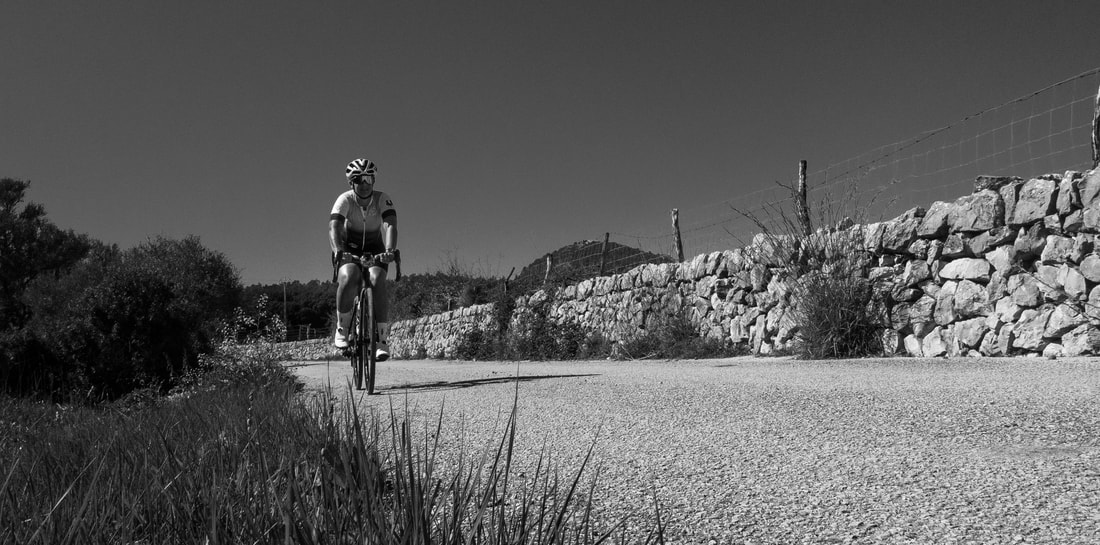
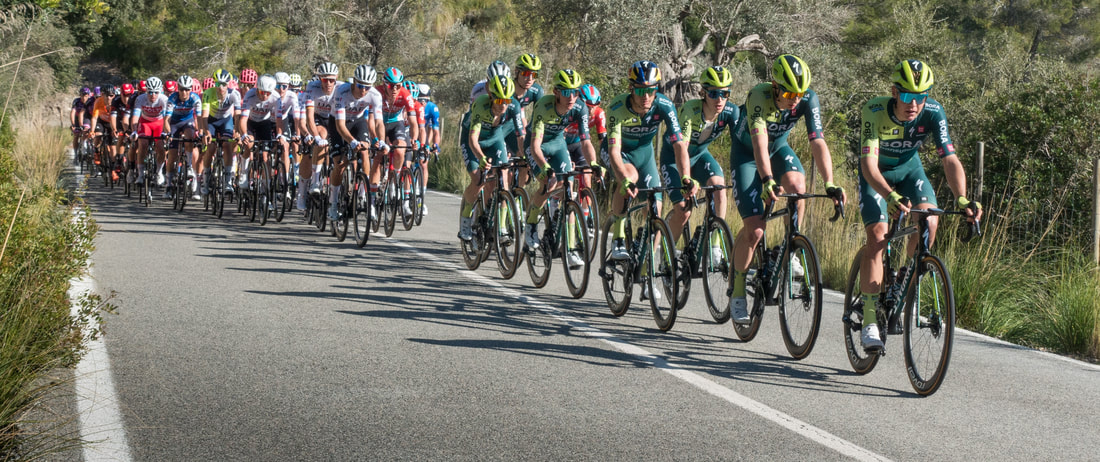
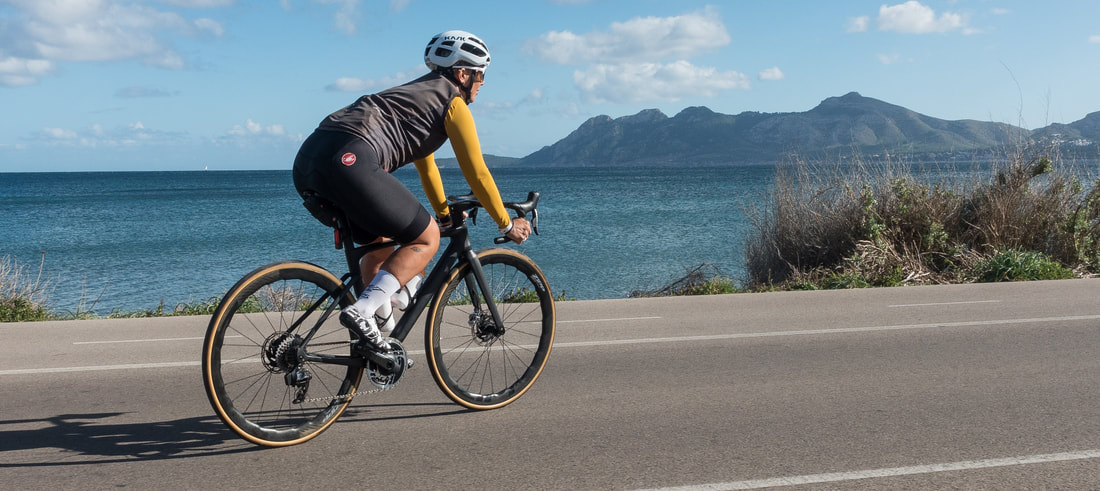

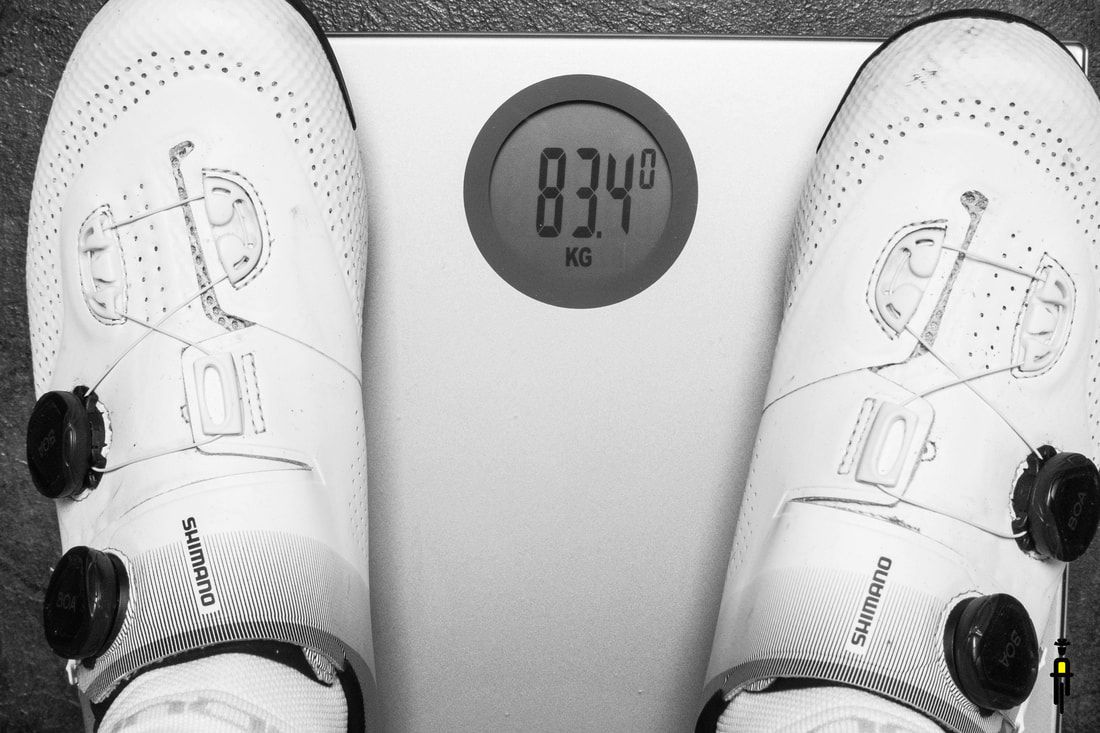
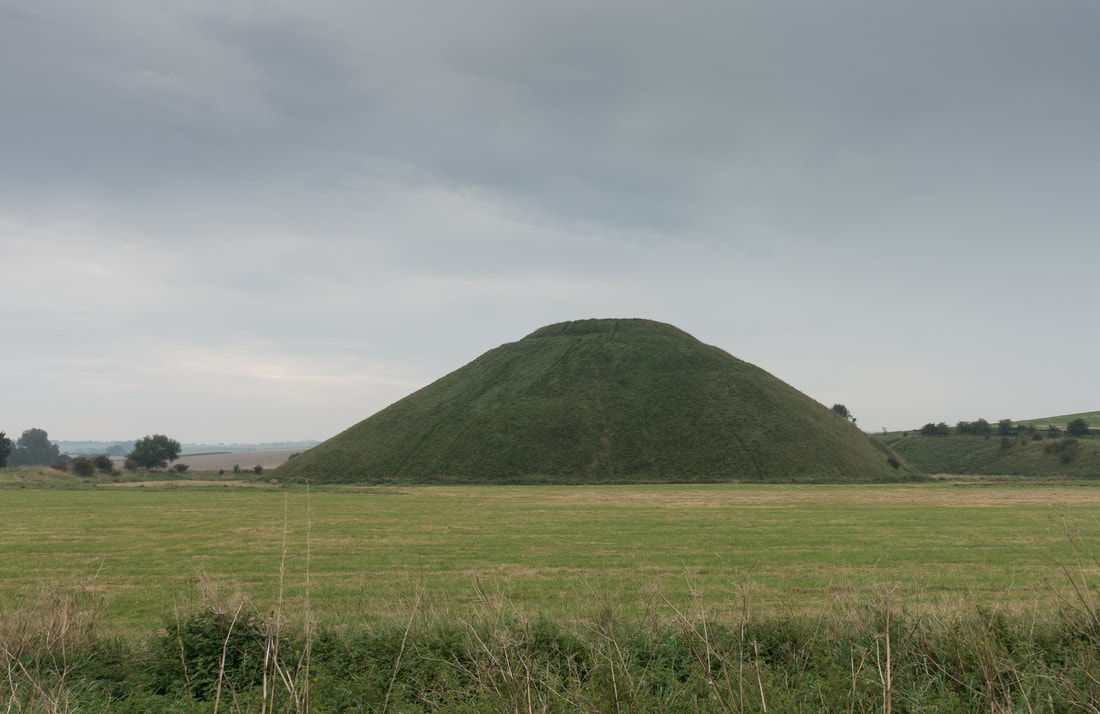

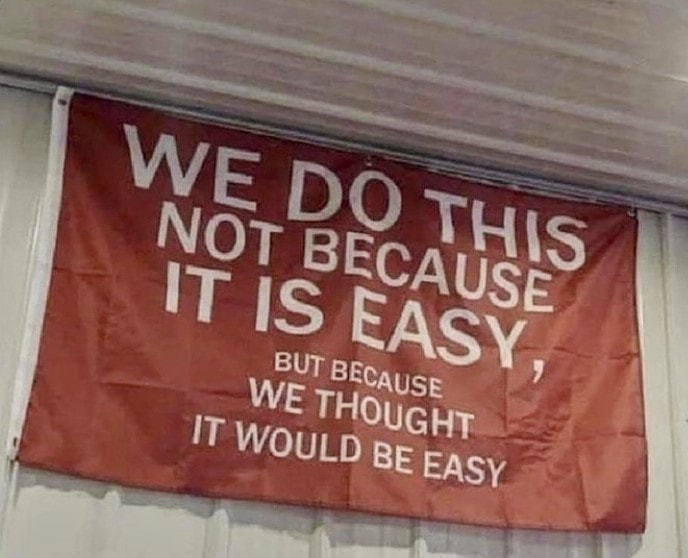
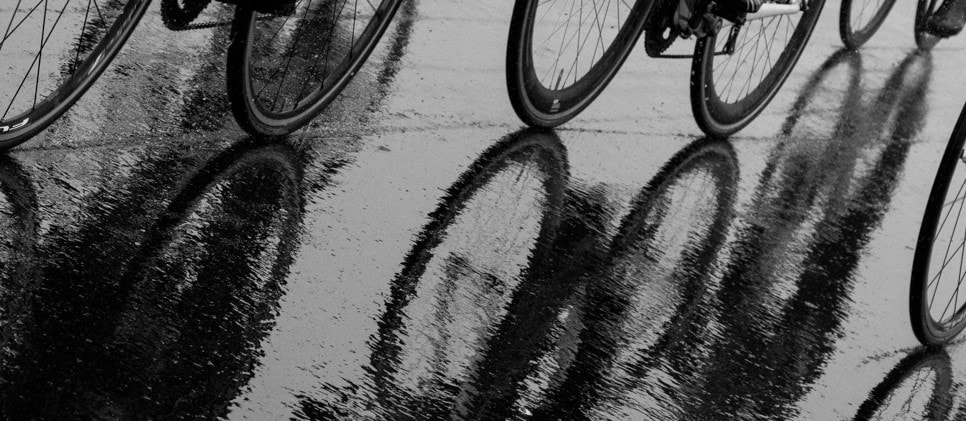
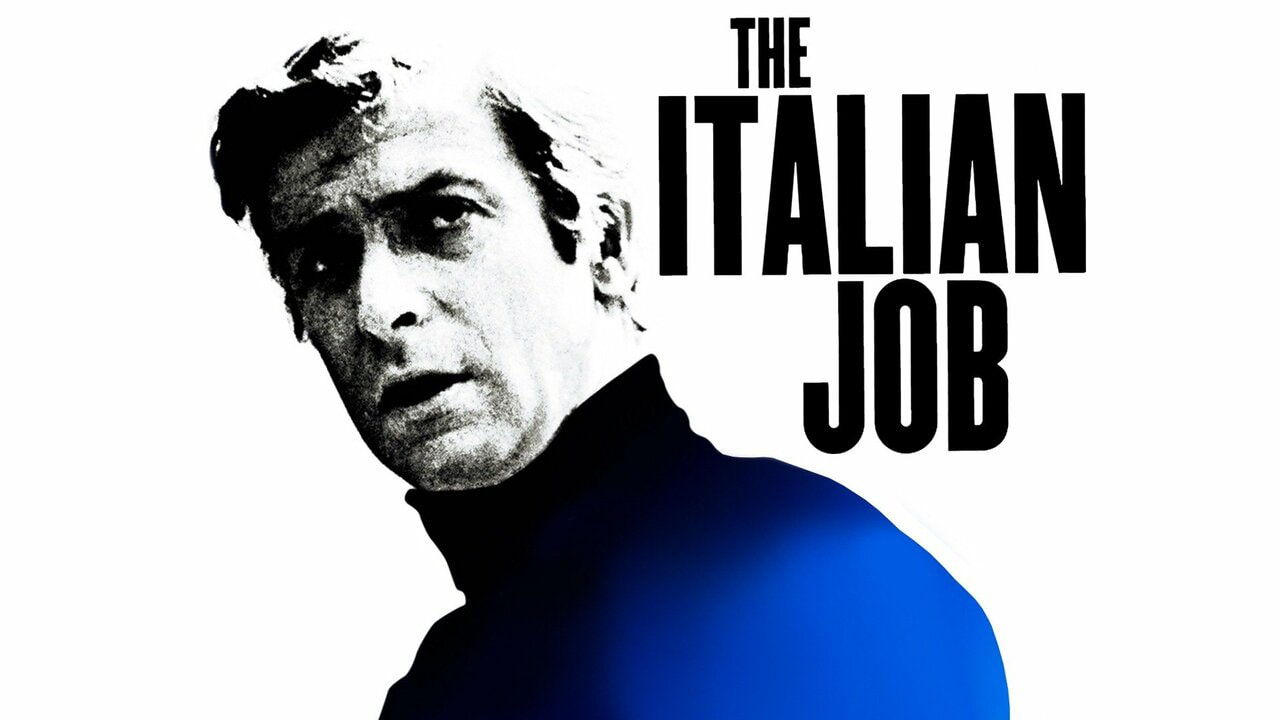
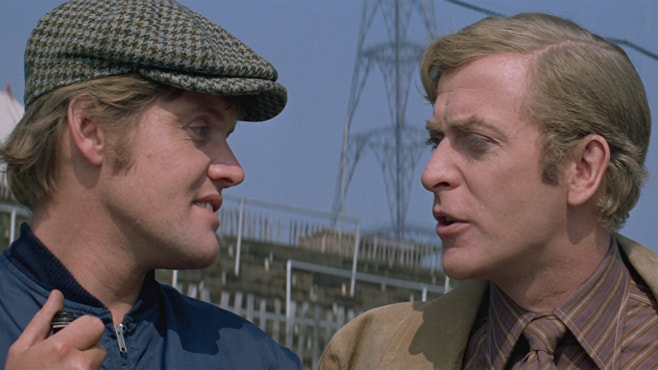
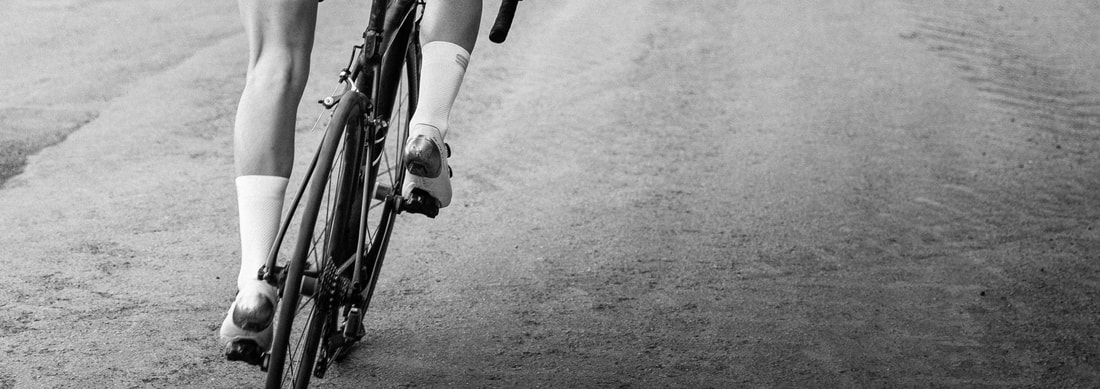
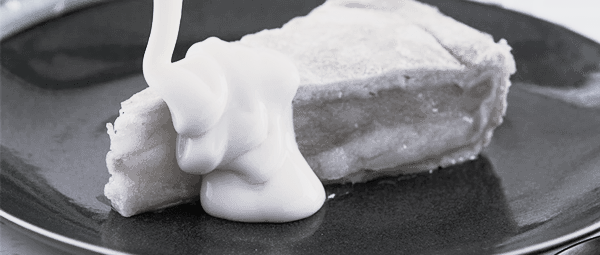

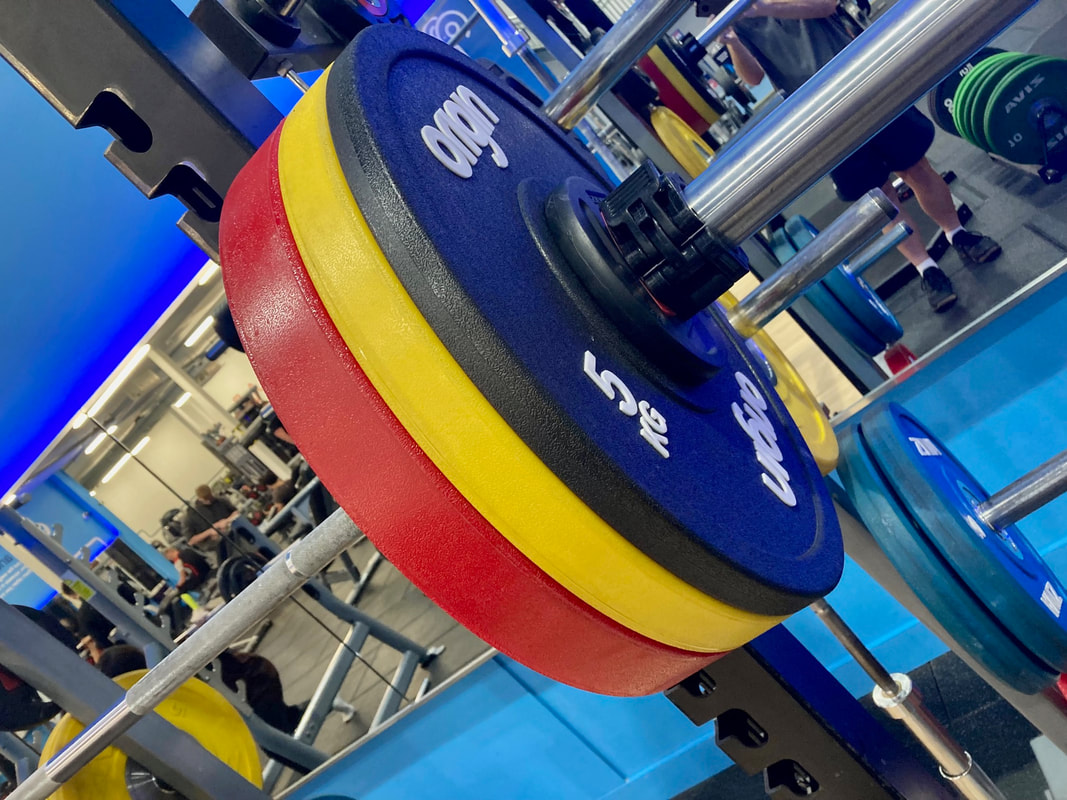

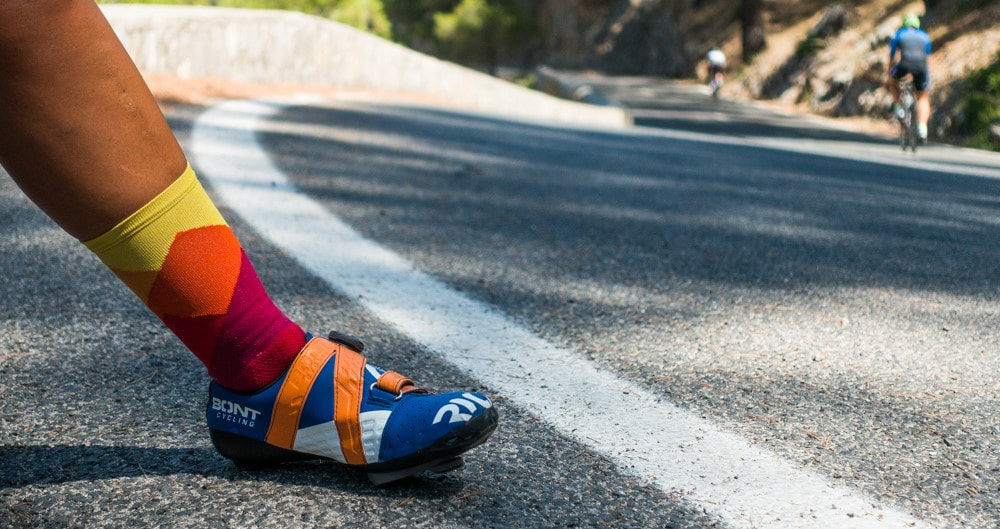
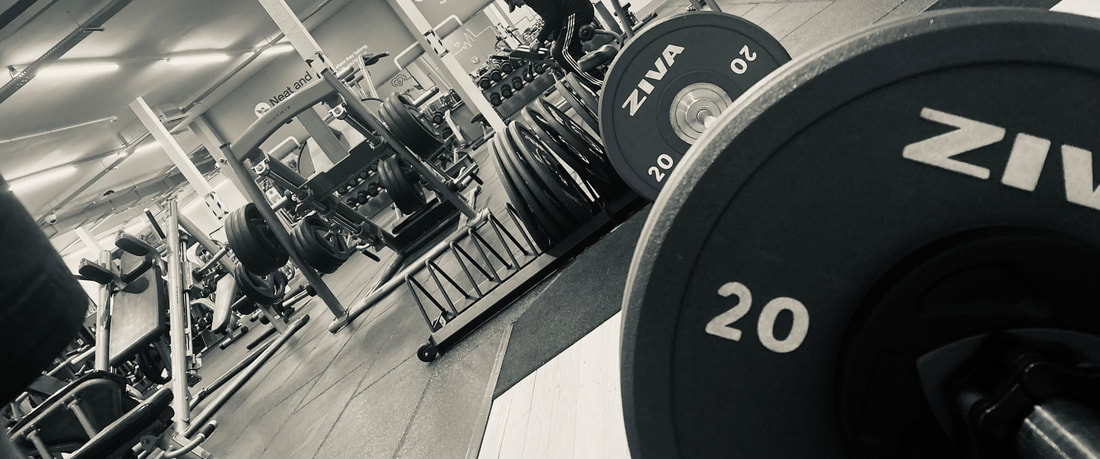
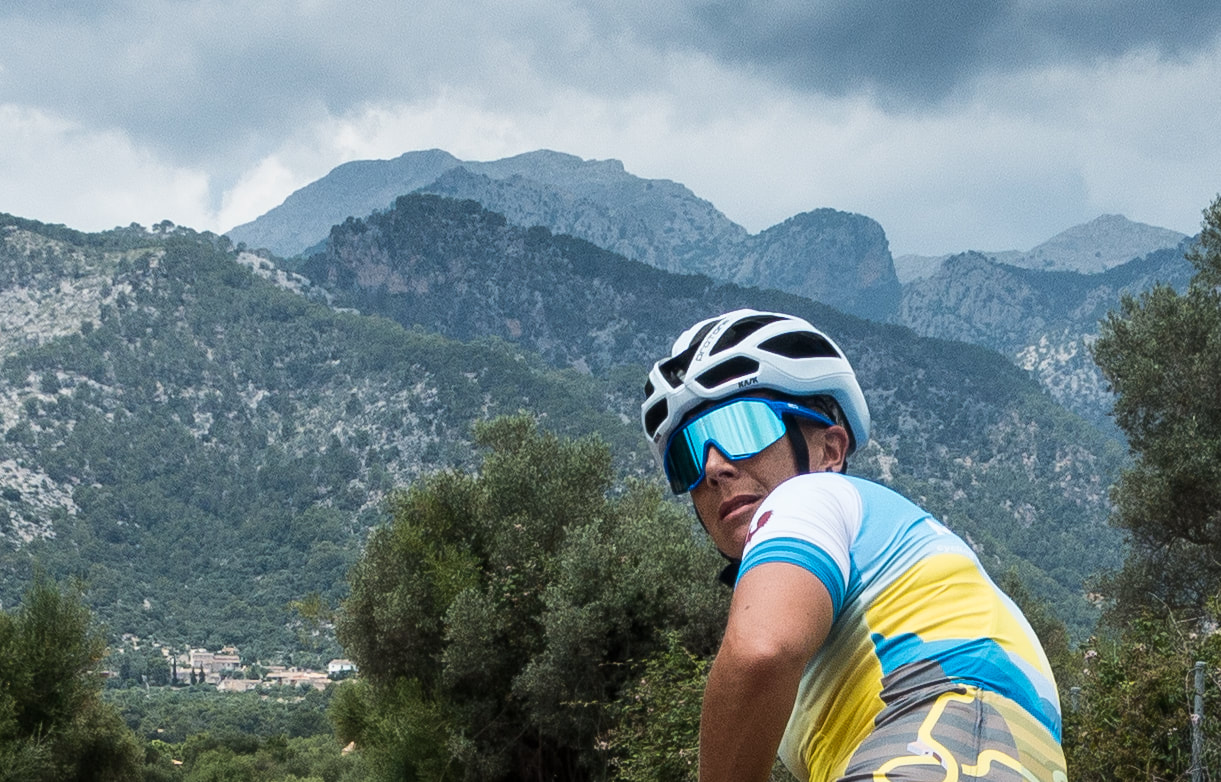


 RSS Feed
RSS Feed
